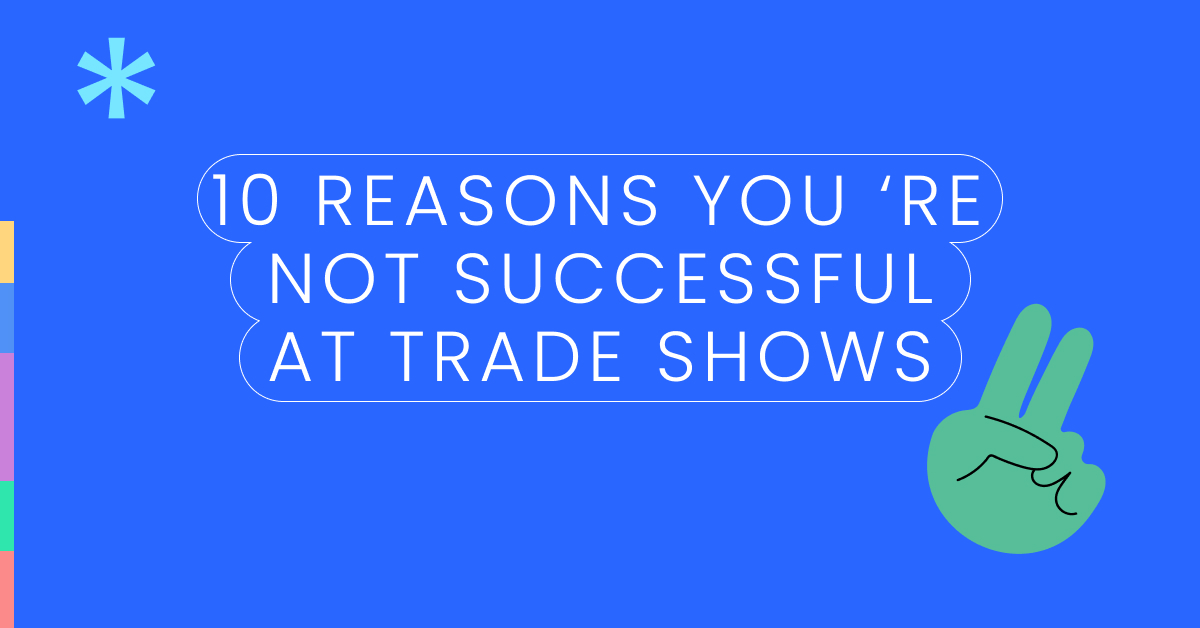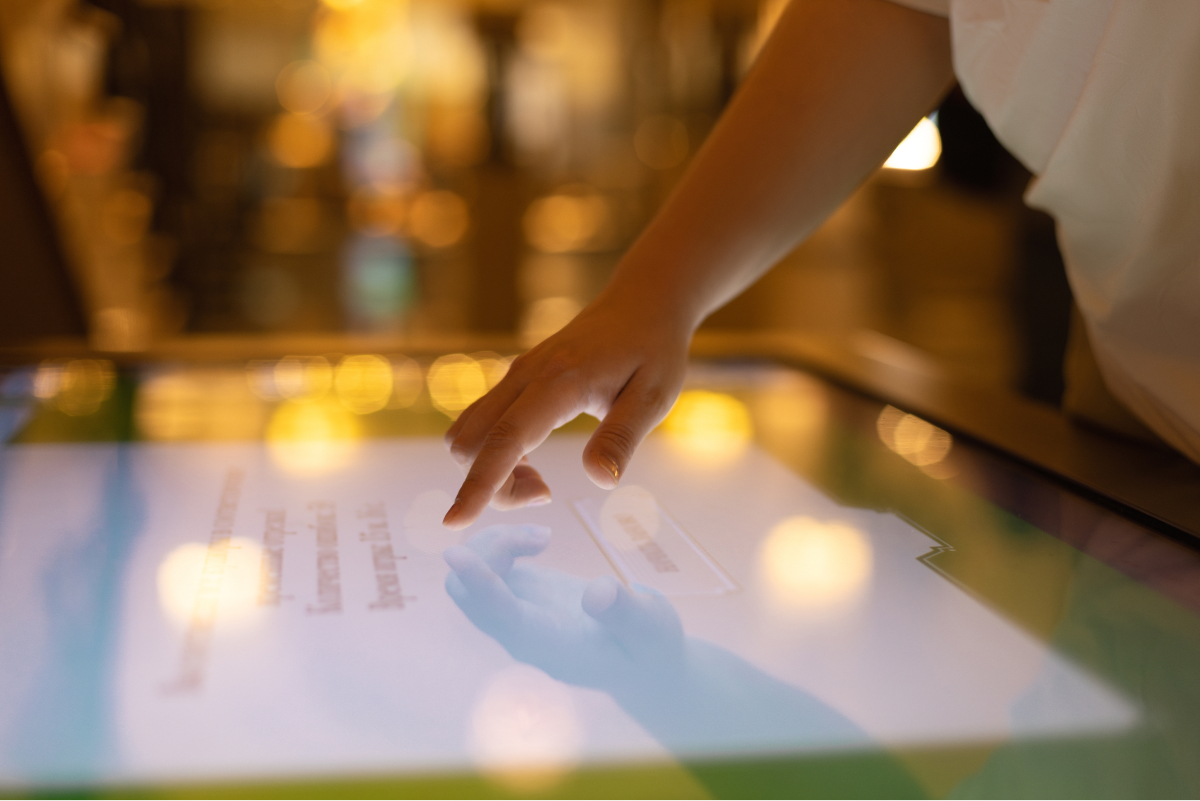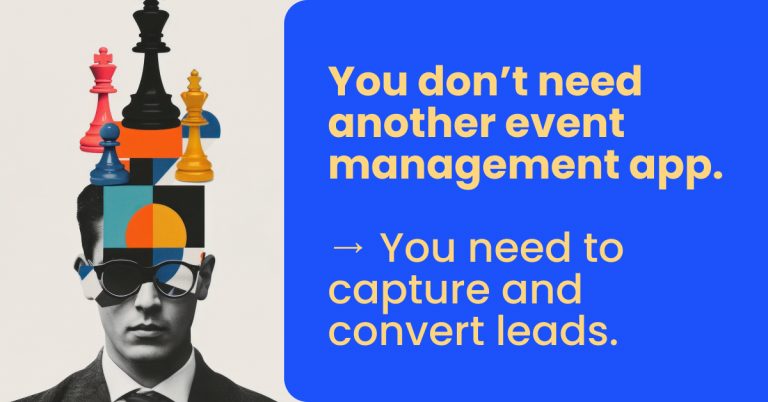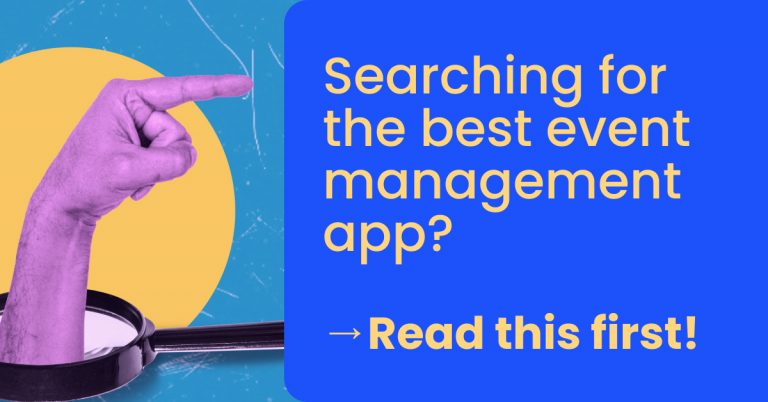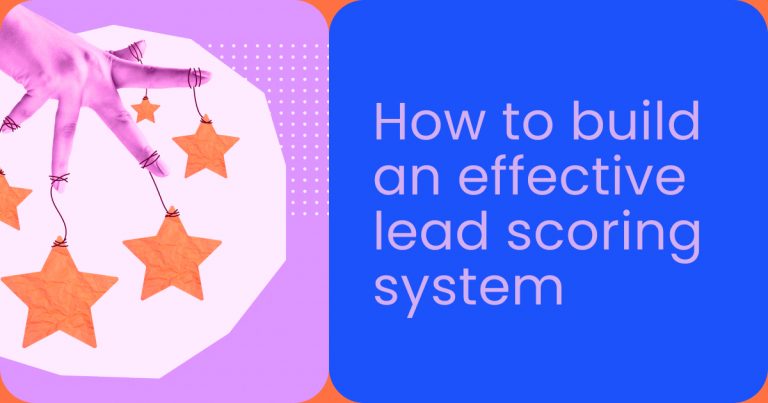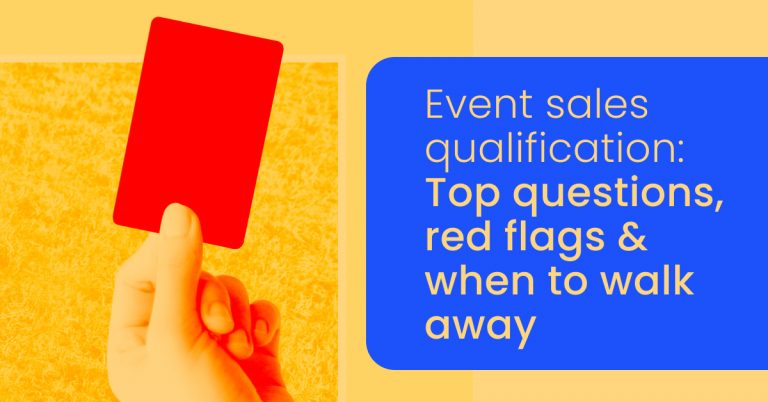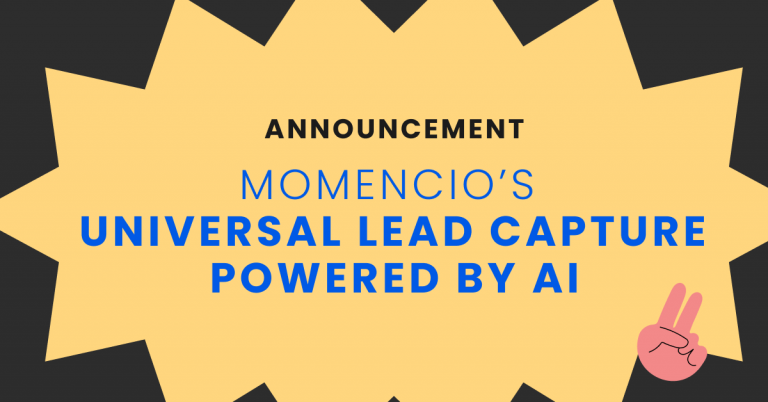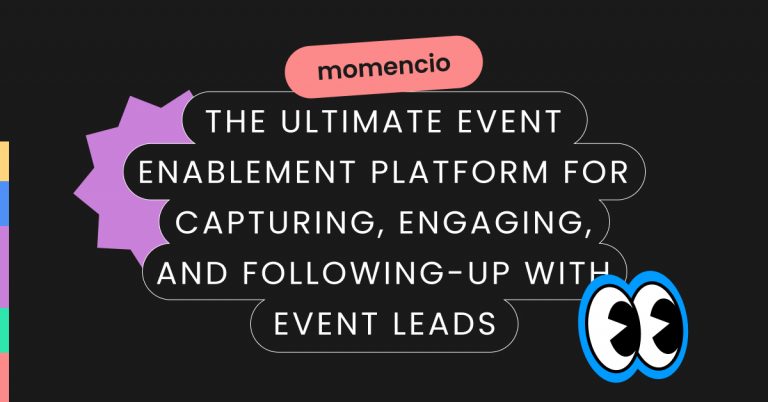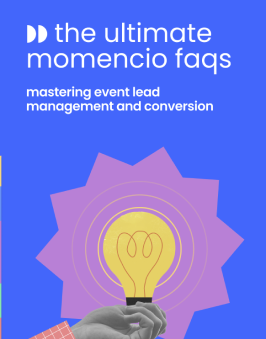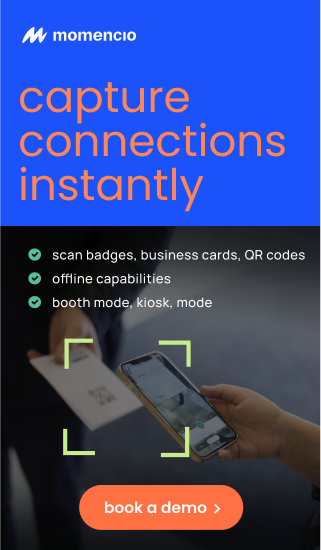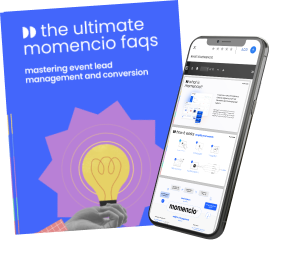10 Reasons You’re Not Successful at Trade Shows
Trade shows are critical for businesses looking to expand their reach and enhance their market presence. However, many companies return from these events feeling that they have yet to achieve their goals. This article delves into the ten primary reasons why businesses might not see the desired success at trade shows and provides actionable solutions to turn these challenges into opportunities for growth.
For instance, did you know that according to recent studies, 80% of trade show attendees remember businesses primarily because of their booth’s engaging design? Yet, many companies fail to capitalize on this by neglecting their booth’s visual and interactive appeal.
1. Poor Pre-Event Planning and Lack of Objectives
The Foundation of Trade Show Success
Effective trade show participation hinges on meticulous pre-event planning and a clear set of objectives. Surprisingly, a significant number of exhibitors need to invest the necessary time and resources in these crucial initial steps, leading to suboptimal outcomes. According to a study by the Center for Exhibition Industry Research, 44% of trade show exhibitors do not set specific objectives or measurable goals for their event participation, which often results in unclear strategies and missed opportunities.
The Pitfalls of Inadequate Planning
- Lack of Direction: With specific goals, it’s easier to design a booth or plan activities that align with business objectives. This lack of direction not only confuses the staff but also diminishes the potential impact on attendees.
- Resource Misallocation: Ineffective planning often leads to either overspending or underutilizing the budget. Companies might overspend on flashy features that attract attention but fail to generate leads or, conversely, skimp on essential elements that could have enhanced attendee engagement.
- Inconsistent Brand Messaging: When objectives are clear, messaging can become consistent. This inconsistency may need to be clarified for potential leads or to convey the company’s value proposition effectively.
Strategic Planning Steps
To avoid these pitfalls, exhibitors should adopt a systematic approach to trade show planning:
- Define Clear Objectives: Start by setting SMART (Specific, Measurable, Achievable, Relevant, Time-bound) goals. Whether the aim is to launch a new product, generate a set number of leads, or enhance brand awareness, having clear objectives steers all subsequent planning efforts.
- Audience Analysis: Understanding who will attend the trade show and what they are looking for can guide not only the booth design but also the choice of promotional materials and activities conducted. Tailoring the approach to the needs and interests of the expected audience increases the likelihood of engaging them effectively.
- Budget Allocation: Once objectives are set, budgeting becomes more straightforward. Allocate funds based on the expected ROI of different activities, ensuring that resources are invested in areas most likely to generate returns.
- Pre-Show Marketing: Engage potential visitors before the event through targeted email campaigns, social media posts, and partnerships. Use platforms like LinkedIn to announce your participation and schedule meetings with key prospects in advance.
- Training and Rehearsals: Prepare your team through training sessions that include role-playing scenarios they might encounter during the trade show. Ensure everyone understands the objectives, key messages, and how to use any technology or tools at the booth.
- Logistical Planning: Finalize all logistical aspects, from travel arrangements and accommodation to transportation and setup schedules. A detailed checklist can prevent last-minute hitches that could derail your trade show efforts.
Leveraging Technology for Enhanced Planning
Incorporating event technology, such as momencio, can streamline the planning process and enhance overall performance. Use it to manage pre-show marketing campaigns, track engagement in real time, and ensure all materials and interactions are aligned with your goals. This integration of technology not only simplifies logistics but also boosts the efficiency and effectiveness of trade show participation.
For more info. please refer to Transform your events: A detailed guide to event planning tools
2. Ineffective Lead Capture Techniques
The Crucial Role of Lead Capture at Trade Shows
Lead capture is the cornerstone of trade show success, turning passing interactions into potential sales and long-term relationships. However, many exhibitors need to deploy effective lead capture strategies, relying on outdated methods or poorly designed processes that do not resonate with today’s tech-savvy attendees. The consequence? Lost opportunities and a failure to maximize the return on investment (ROI) from event participation.
Common Mistakes in Lead Capture
- Reliance on Paper Forms: Despite the digital revolution, some exhibitors still use paper forms for lead capture. This method is not only prone to errors and losses but also slow, potentially causing frustration and disinterest among booth visitors.
- Generic Conversations: Engaging visitors with a one-size-fits-all approach fails to create memorable interactions or capture detailed information about individual needs and preferences, which are crucial for effective follow-up.
- Lack of Immediate Follow-Up: Collecting information without a strategy for immediate engagement or follow-up often leads to cold leads. If potential customers don’t hear from you while the interaction is still fresh, their interest might wane.
Enhancing Lead Capture with Modern Techniques
To overcome these challenges, exhibitors should adopt more sophisticated lead-capture techniques that leverage technology and personalized interaction:
- Digital Data Entry Solutions: Utilizing digital tools like tablets or smartphones equipped with lead capture software can streamline data collection, reduce errors, and speed up the process. These tools often allow for the immediate addition of contextual notes or tags that can personalize follow-up efforts.
- Interactive Content: Incorporate interactive elements such as touchscreens, games, or augmented reality experiences that encourage visitors to engage more deeply. These technologies can be used to gather data engagingly, ensuring visitors leave their information willingly and memorably.
- Qualification Surveys: Deploy quick digital surveys that help qualify leads on the spot based on their responses. This method ensures that the follow-up process is tailored to the specific needs and interests of each lead, increasing the chances of conversion.
- Real-Time Follow-Up: Set up a system that allows for immediate follow-up messages or emails as soon as a visitor’s details are captured. This could include a thank-you message, additional information about products or services they showed interest in, or an invitation to a private demo post-show.
- Utilize Advanced CRM Integration: Implement a CRM system that integrates seamlessly with your lead capture tools. Platforms like momencio offer potent solutions for not only capturing lead information but also enriching it with additional data points collected through various interactions, providing a comprehensive view of each prospect.
For a more detailed analysis, you can read Trade Show Badge Scanner Apps For Lead Capture. An In-Depth Guide for 2024
3. Neglecting Booth Design and Attendee Experience
The Impact of Booth Design on Trade Show Success
The design and layout of your trade show booth play a critical role in attracting and retaining attendees. A well-designed booth not only draws attention but also facilitates better interactions and enhances the overall attendee experience. However, many exhibitors need to pay more attention to the importance of booth design, resulting in a lackluster presence that fails to engage potential customers or communicate key messages effectively.
Common Booth Design Mistakes
- Cluttered and Confusing Layouts: Booths crammed with too much information or too many elements can overwhelm visitors, making it difficult for them to focus on what’s important. This clutter can detract from key messages and products, reducing the effectiveness of your trade show presence.
- Poor Branding: Failing to incorporate consistent and clear branding elements can make your booth forgettable. Attendees often interact with numerous exhibitors; strong branding is necessary for them to remember or differentiate your company from others.
- Inadequate Lighting: Lighting plays a vital role in setting the mood and highlighting key areas or products within the booth. Poor lighting can make spaces uninviting and can even affect how products are viewed.
- Lack of Interactive Elements: Static displays are less engaging than interactive or dynamic elements that encourage participation. Interactive displays not only draw more visitors but also increase the time they spend at your booth, providing more opportunities to engage and capture leads.
Strategies to Enhance Booth Design and Attendee Experience
- Focus on Openness and Flow: Design your booth to be open and welcoming, with clear paths for visitors to flow through the space. This setup encourages more foot traffic and makes it easier for attendees to access the information or products they are interested in.
- Utilize High-Impact Branding: Ensure your branding is prominent and consistent throughout the booth design. Use logos, color schemes, and messaging that align with your overall brand identity to make a memorable impression.
- Invest in Quality Lighting: Good lighting enhances the visual appeal of your booth and can be used to spotlight products or essential information. Consider different lighting strategies, such as overhead lighting for general illumination and spotlights for featured products.
- Incorporate Technology and Interactivity: Utilize technologies such as touch screens, virtual reality (VR), augmented reality (AR), or interactive kiosks to create engaging and memorable experiences. These tools can provide immersive demonstrations of your products or services and make information gathering more interactive.
- Create Comfortable Seating Areas: Providing a space for attendees to sit and relax can keep them at your booth longer, giving your team more time to engage in meaningful conversations. Comfortable seating areas can also reflect positively on your brand’s hospitality and thoughtfulness.
- Showcase Product Demonstrations: Live demonstrations or interactive product experiences can captivate an audience and provide tangible insights into the benefits of your offerings—scheduled demonstrations throughout the event to keep your booth energetic and engaging.
Crafting a Memorable Trade Show Presence
A well-thought-out booth design is essential for making a lasting impression at trade shows. By focusing on aesthetics, functionality, and interactivity, exhibitors can significantly enhance the attendee experience. This not only aids in effective communication and branding but also increases the likelihood of converting booth visits into meaningful business opportunities. Investing in a strategic booth design is an investment in your trade show success.
4. Failing to Train and Prepare Your Team Properly
The Significance of Team Preparation in Trade Show Success
Your team is the face of your brand during a trade show, and their performance can directly influence the outcomes of the event. Despite this, many companies need to adequately prepare their staff for the unique challenges and opportunities that trade shows present. This lack of preparation can lead to inconsistent messaging, missed leads, and, ultimately, a failure to meet event objectives.
Common Team Preparation Oversights
- Inadequate Product Knowledge: Team members who need to be better-versed in the details of the products or services being showcased cannot effectively answer questions or highlight critical features, which can undermine credibility and interest.
- Poor Communication Skills: With proper training in communication and engagement techniques, staff may be able to initiate conversations, handle objections, or effectively convey the brand’s message.
- Lack of Role Clarity: Team members need to be clearer about their specific roles and responsibilities at the event to avoid confusion and inefficiencies, with essential tasks potentially being overlooked or duplicated.
- Insufficient Engagement Strategies: Staff untrained in engagement strategies may miss opportunities to capture leads or fail to provide a compelling experience to booth visitors.
Effective Strategies for Team Preparation
- Comprehensive Product Training: Ensure that every team member is thoroughly trained on the products or services being presented. This training should include not only features and benefits but also common customer questions and competitive comparisons.
- Role-Specific Training: Assign clear roles and responsibilities to each team member, tailored to their strengths and the needs of the event. Provide training that is specific to these roles, whether it’s lead capture, product demonstration, or customer service.
- Engagement and Communication Workshops: Conduct workshops that focus on effective communication and engagement techniques. These should cover topics like active listening, body language, elevator pitches, and handling different types of visitor interactions.
- Mock Sessions and Role-Playing: Implement mock sessions where team members can practice their skills in simulated scenarios. Role-playing can be particularly effective in preparing staff for real-life interactions, helping them to respond more confidently and effectively under pressure.
- Familiarization with Technology and Tools: If you’re using any specific technology or tools for lead capture or demonstrations (like momencio), make sure all team members are familiar with these and can use them efficiently during the show.
- Motivation and Team Building: Boost team morale and motivation through team-building activities. A motivated team is more likely to be proactive and engaged, which can translate to better performance at the trade show.
Empowering Your Trade Show Team
Proper training and preparing your team is crucial for maximizing the effectiveness of your trade show participation. By ensuring that staff are knowledgeable, confident, and clear on their roles, you can significantly enhance their ability to engage with attendees and achieve your event goals. Investing in your team’s preparation not only improves their performance but also reflects positively on your brand, making your trade show efforts more successful and rewarding.
5. Underutilizing Event Technology and Data
The Power of Technology in Enhancing Trade Show Success
Trade shows are dynamic environments where every interaction holds potential for business growth. In such settings, leveraging technology not only streamlines operations but also provides crucial data insights that can drive more intelligent business decisions. Yet, many exhibitors need to fully utilize the available technological tools, missing out on opportunities to optimize their trade show performance and deepen attendee engagement.
Common Mistakes in Technology Utilization
- Limited Data Capture: Relying solely on traditional methods like business cards or sign-up sheets for lead capture is a missed opportunity for gathering comprehensive attendee data. These methods often result in incomplete or inaccurate information.
- Poor Integration with Other Systems: Integration between event technology and existing business systems like CRM or marketing automation platforms is necessary for valuable insights gained at the event to be recovered and utilized.
- Neglecting Real-Time Analytics: Many exhibitors need to use real-time data analytics during the event, which can provide immediate insights into attendee behavior and booth performance, allowing for on-the-spot adjustments.
- Inadequate Follow-Up Strategies: Lack of automated follow-up tools means slower response times post-event, potentially cooling the leads that were interested during the show.
Leveraging Event Technology Effectively
- Advanced Lead Capture Tools: Use digital tools like momencio to capture leads directly into your CRM system. These tools can record more detailed information, including attendee preferences and behaviors, providing a richer data set for follow-up.
- Seamless System Integration: Ensure that your lead capture and event management tools integrate seamlessly with your CRM and marketing platforms. This integration enables you to maintain continuity in customer interactions and streamline post-event follow-ups.
- Utilization of Real-Time Analytics: Deploy analytics tools that provide real-time data on booth traffic, engagement levels, and interaction patterns. This information can be invaluable for making immediate improvements and for planning future events.
- Automated Follow-Up Systems: Implement automated systems that trigger personalized follow-up communications based on specific actions or interests shown by the attendees. This approach ensures timely and relevant engagement, increasing the chances of converting leads into customers.
- Interactive Displays and Engagement Tools: Use technology like touchscreens, virtual reality (VR), and augmented reality (AR) to create interactive and engaging experiences that capture attendee’ interest and provide additional data points for personalized follow-ups.
Transforming Trade Show Outcomes with Technology
Embracing event technology transforms the traditional trade show experience into a data-driven, highly engaging, and effective marketing opportunity. By utilizing tools for advanced lead capture, integrating systems for seamless data flow, employing real-time analytics, and automating follow-up processes, exhibitors can significantly increase their ROI from trade shows. The key is to select the right technologies that align with your specific event goals and to ensure they are implemented effectively to maximize both attendee engagement and business outcomes.
6. Poor Follow-Up Strategies Post-Event
The Critical Importance of Effective Follow-Up
A trade show’s success isn’t just measured by the number of leads gathered but also by how these leads are nurtured after the event concludes. Effective follow-up strategies are crucial in converting interest into actionable business opportunities. However, many exhibitors need to improve in this phase, either by delaying communication or failing to personalize their interactions, resulting in diminished lead conversion rates and missed sales opportunities.
Critical Mistakes in Post-Event Follow-Up
- Delayed Responses: The momentum of a trade show fades quickly. Delaying follow-up can lead to a significant drop in lead interest, as attendees often explore multiple options and can quickly forget interactions.
- Generic Communications: Sending the same generic message to all leads fails to address the specific interests or interactions that occurred at the event, making the follow-up feel impersonal and irrelevant.
- Lack of Coordination: With a coordinated follow-up strategy that involves sales and marketing teams, there’s a chance of sending mixed messages or duplicate communications, which can frustrate potential customers.
- Failing to Use Collected Data: Not utilizing the detailed attendee data collected at the event misses the opportunity to tailor follow-up messages and offers based on specific attendee interests or behaviors.
Strategies for Effective Post-Event Follow-Up
- Timely Communication: Initiate follow-up communications within 24-48 hours after the event while the experience is still fresh in attendees’ minds. This quick turnaround helps keep your brand at the forefront of their thoughts.
- Personalized Messages: Use the data collected during the event to personalize follow-up messages. Address leads by name, reference specific conversations or interests, and tailor offers based on their demonstrated preferences.
- Integrated Follow-Up Campaigns: Coordinate follow-up efforts across all relevant departments. Ensure that everyone involved has access to the same data and understands the overall strategy to maintain consistency and professionalism in all communications.
- Leverage Marketing Automation: Utilize marketing automation tools to schedule and send follow-up emails, social media messages, and other communications. Automation can help maintain timely and consistent contact while allowing personalization at scale.
- Segment Leads: Categorize leads based on their interest level, potential for conversion, and specific needs. Tailor follow-up strategies to different segments to maximize effectiveness, using more direct sales tactics for hot leads and educational content for those who need more nurturing.
Maximizing Trade Show Investments Through Follow-Up
The effectiveness of your follow-up strategy can make or break your trade show ROI. By ensuring prompt, personalized, and well-coordinated follow-up actions, you can significantly enhance lead conversion rates and, ultimately, achieve better sales outcomes. Investing in robust follow-up processes and technologies not only helps convert more leads into customers but also strengthens your brand’s reputation for professionalism and customer engagement.
For a more detailed analysis about effective Follow-Up, please refer to our momencio: The ultimate event enablement platform for capturing, engaging, and following-up with event leads
7. Lack of Clear ROI Measurement and Analytics
The Importance of Measuring Trade Show ROI
Understanding the return on investment (ROI) from trade shows is crucial for justifying the costs involved and for making informed decisions about future event participation. Despite its importance, many exhibitors need help with effectively measuring their trade show ROI. This lack of clear metrics and analytics can lead to continued investment in strategies that do not yield beneficial results or, worse, overlook opportunities for significant improvement.
Common Challenges in ROI Measurement
- Undefined Metrics: Without predetermined metrics for success, it’s challenging to assess the effectiveness of trade show participation. Exhibitors often focus solely on lead quantity without considering lead quality or other important indicators.
- Inadequate Tracking Tools: Failing to use or integrate the right tracking tools during and after the event can result in a lack of data on which to base ROI calculations. This can include foot traffic, engagement levels, and follow-up outcomes.
- Poor Data Collection: Not collecting comprehensive data from attendees or collecting data that is not actionable can hinder the ability to analyze event performance accurately.
- Lack of Post-Event Analysis: Some exhibitors do not perform thorough post-event analysis, missing the chance to understand what worked, what didn’t, and how to improve future event strategies.
Effective ROI Measurement Strategies
- Set Specific, Measurable Goals: Before the trade show, define what success looks like. This could include the number of leads generated, the quality of leads (e.g., the number of sales-qualified leads), specific customer interactions, or even brand awareness and media mentions.
- Utilize Advanced Analytics Tools: Invest in technology that can track and analyze visitor interactions at your booth. Tools like RFID, lead capture software, and CRM systems can provide valuable data on attendee behaviors and preferences.
- Integrate Event Data with Sales Data: To accurately measure ROI, integrate the data collected at the event with your sales data. This will help you track how many leads turn into actual sales and the overall revenue generated from these conversions.
- Conduct Post-Event Surveys: Send out surveys to both attendees and your booth staff to gather feedback on the event experience and outcomes. This feedback can provide qualitative data that supports the quantitative metrics.
- Regular Review and Adjustment: Regularly review the data and metrics from each event to identify trends and areas for improvement. Use this information to adjust your event strategies and better allocate resources.
Maximizing Value Through Measurement
Measuring ROI accurately is essential for understanding the value of trade show investments and for making data-driven decisions about future participation. By establishing clear metrics, utilizing advanced tracking tools, and conducting thorough post-event analyses, exhibitors can ensure that they are not only justifying their current trade show expenses but are also setting the stage for greater success in future events. This strategic approach to ROI measurement fosters continuous improvement and helps maximize the overall impact of trade show activities.
8. Ignoring the Power of In-Booth Engagement
The Significance of Engagement at Trade Shows
In-booth engagement is a crucial factor in the success of trade show exhibits. It not only helps attract and retain the attention of attendees but also significantly enhances the overall impact of your presence at the event. Effective engagement strategies can lead to deeper interactions, more qualified leads, and, ultimately, higher conversion rates. However, many exhibitors need to capitalize on this aspect, either by underestimating its importance or by not implementing engaging tactics effectively.
Common Mistakes in In-Booth Engagement
- Passive Engagement Methods: Relying solely on passive forms of engagement, such as static displays or unstaffed demo stations, can fail to capture the interest of attendees who are often looking for more interactive and personalized experiences.
- Lack of Clear Engagement Objectives: With specific goals for engagement, activities may align with overall event objectives, leading to missed opportunities for meaningful interaction.
- Undertrained Staff: Booth staff who need to be properly trained to engage with visitors actively can lead to a lack of enthusiasm or inability to effectively communicate key messages, which dampens the overall visitor experience.
- Inadequate Use of Technology: Not utilizing available technologies like AR, VR, interactive kiosks, or gamification that can enhance engagement and make the booth experience memorable.
Strategies to Boost In-Booth Engagement
- Interactive Demonstrations and Live Presentations: Organize live demonstrations or presentations that highlight the unique features and benefits of your products or services. These should be scheduled regularly throughout the event to maintain booth traffic and interest.
- Engagement Through Technology: Incorporate advanced technologies such as virtual reality (VR), augmented reality (AR), touch screens, and interactive games that can engage visitors in unique ways. These technologies can help demonstrate your product’s features in a compelling and immersive manner.
- Personalized Interactions: Train booth staff to quickly identify the needs and interests of booth visitors and tailor their approach accordingly. Customized interactions are more likely to leave a lasting impression and foster meaningful connections.
- Gamification Elements: Use gamification techniques like contests, quizzes, or challenges that can be linked to rewards. This not only increases engagement but also makes the interaction fun and memorable.
- Comfortable and Inviting Booth Design: Design your booth with comfort in mind. Include seating areas where detailed discussions can take place, refreshments, and perhaps even charging stations for mobile devices. These elements can make visitors more willing to stay and engage.
Elevating Trade Show Results Through Engagement
Effective in-booth engagement is essential for standing out at crowded trade shows and transforming passive interest into active leads and eventual sales. By integrating interactive technologies, personalizing visitor interactions, and maintaining an energetic and inviting booth environment, exhibitors can significantly enhance the effectiveness of their trade show participation. These efforts will not only improve lead generation but also contribute significantly to the overall ROI of the event.
9. Not Adapting to Feedback and Event Trends
The Necessity of Adaptation in Trade Show Success
Adaptability is crucial in the dynamic environment of trade shows, where attendee preferences and industry trends can shift rapidly. Exhibitors who need to adapt their strategies based on feedback and evolving trends risk becoming irrelevant, no matter how successful past strategies have been. This lack of adaptation can lead to stagnant displays, outdated engagement methods, and, ultimately, a disconnect with the target audience.
Common Mistakes in Adapting to Feedback and Trends
- Ignoring Attendee Feedback: Some exhibitors collect feedback but need to act on it, missing valuable insights into how they can improve their booth’s appeal and effectiveness.
- Overlooking Industry Trends: Failing to stay updated with the latest trends in trade show marketing, such as the use of augmented reality or sustainability practices, can make an exhibit feel outdated compared to competitors who embrace these innovations.
- Inflexible Event Strategies: Sticking rigidly to a predefined strategy without considering real-time observations and interactions at the event can prevent exhibitors from seizing opportunities to enhance engagement or address visitor concerns.
Strategies for Effective Adaptation
- Actively Seek and Implement Feedback: Develop a system for gathering feedback from attendees, either through digital surveys, interactive kiosks, or direct conversations. Review this feedback in real time, if possible, and make adjustments to your strategy or booth setup accordingly.
- Stay Informed About Industry Trends: Regularly research and incorporate current trends in trade show presentations, such as interactive technology, eco-friendly materials, and data-driven marketing. Attend workshops, webinars, and other educational events to keep your knowledge and skills sharp.
- Flexible Planning and Execution: While having a plan is essential, allowing some flexibility to adapt to what’s actually happening at the event can be advantageous. Prepare your team to make on-the-fly decisions that align with observed attendee behaviors and preferences.
- Use Data to Guide Decisions: Utilize data analytics tools to gather real-time information about booth traffic, engagement levels, and audience demographics. Use this data to make informed decisions about how to adjust your approach during the event.
- Post-Event Review and Strategy Refinement: After the event, conduct a thorough review of what worked and what didn’t, incorporating feedback from all stakeholders. Use these insights to refine your strategy for future shows, ensuring continuous improvement.
Embracing Change for Continued Relevance
Being adaptable in response to attendee feedback and industry trends is not just about staying relevant; it’s about actively enhancing your trade show’s success. By implementing a flexible approach and using feedback and data to guide your strategies, you can ensure that your trade show presence is as effective and engaging as possible. This proactive approach not only improves current performance but also positions your exhibit as innovative and responsive, qualities that are highly valued in any industry.
10. Lack of Comprehensive Post-Event Analysis and Learning
Importance of Post-Event Reflection for Continuous Improvement
While many exhibitors focus on the immediate outcomes of trade shows, such as lead generation and sales, they often need to pay more attention to the importance of a thorough post-event analysis. This comprehensive review is crucial for understanding the full spectrum of event performance and identifying both successes and areas for improvement. With it, companies may avoid repeating ineffective practices or capitalize on strategies that could enhance future trade show results.
Common Shortcomings in Post-Event Processes
- Superficial Analysis: Many organizations limit their evaluation to superficial metrics like lead count or immediate sales without assessing more profound indicators of success, such as lead quality, engagement depth, or brand impact.
- Failure to Gather Team Insights: Neglecting to debrief with the event team post-show can lead to missed opportunities to capture valuable insights from those who interacted directly with attendees.
- Ignoring Long-Term Tracking: Failing to track the long-term progress of leads generated at the event means potentially overlooking the extended value and ROI of trade show activities.
Effective Post-Event Analysis Strategies
- Comprehensive Metrics Review: Go beyond basic metrics to include analysis of lead quality, attendee engagement, and brand perception. Utilize both quantitative data and qualitative feedback to get a holistic view of event performance.
- Detailed Team Debriefs: Conduct thorough debriefing sessions with your trade show team to discuss what worked, what didn’t, and potential areas for improvement. These insights are often invaluable for tweaking future strategies.
- Long-Term Lead Follow-Up: Implement a system to track the long-term journey of leads from initial capture through to conversion. This will help you understand the actual value of your trade show investments.
- Competitive Benchmarking: Assess your performance in the context of competitors and industry standards. Understanding how you stack up against others can pinpoint areas for competitive improvement.
- Action Plan for Future Events: Use the insights gained from your analysis to create an action plan for future events. This should include specific steps to enhance booth design, engagement strategies, lead handling, and overall event execution.
Unlocking the Full Potential of Trade Shows
Conducting a comprehensive post-event analysis is essential for maximizing the return on investment from trade shows and for fostering continuous improvement in your event marketing strategy. By thoroughly evaluating each aspect of event performance and integrating these learnings into plans, exhibitors can enhance their effectiveness, stay ahead of industry trends, and achieve sustained success in their event marketing endeavors.
Conclusion
Trade shows are a significant investment in terms of both time and resources and maximizing their potential requires attention to detail across multiple aspects of event planning and execution. The ten common pitfalls discussed highlight areas where many exhibitors fail, often leading to suboptimal results. By understanding these issues—ranging from poor pre-event planning to inadequate follow-up strategies—companies can develop more effective trade show strategies that not only attract and engage attendees but also convert them into lasting customers.
To truly succeed, exhibitors must adopt a comprehensive approach that encompasses robust planning, engaging booth designs, trained and motivated staff, effective use of technology, adaptable strategies based on real-time feedback, and thorough post-event analyses. Each of these elements plays a vital role in enhancing trade show performance and achieving a solid ROI.
Improve Your Trade Show Results with momencio
Are you ready to transform your trade show results? momencio offers advanced event marketing tools that streamline lead capture, enhance attendee engagement, and provide actionable insights that can drive your trade show success to new heights. With momencio, you can ensure that every aspect of your trade show strategy is optimized—from initial planning to post-event follow-up. Book a demo with momencio now and see the difference for yourself!
FAQs
- What are the most effective strategies for increasing engagement at my trade show booth?
- Practical strategies for boosting engagement include utilizing interactive technologies like virtual reality (VR) and augmented reality (AR), incorporating gamification elements such as contests or quizzes, and offering live demonstrations or presentations. Personalized interactions facilitated by well-trained staff also significantly enhance visitor engagement.
- How can I ensure my team is prepared and effective during the trade show?
- Prepare your team by providing comprehensive product training, precise explanations of their roles and responsibilities, and workshops on engagement techniques. Conduct role-playing exercises to simulate different attendee interactions and keep your team motivated with clear goals and incentives.
- What technologies can improve my lead capture process at trade shows?
- Technologies such as digital lead capture tools that integrate directly with your CRM system can significantly streamline the process. Consider using mobile apps or devices for instant data entry, RFID systems for tracking attendee movements, and interactive kiosks for engaging and capturing visitor information.
- How soon should I follow up with leads after a trade show ends?
- It is best to follow up with leads within 24-48 hours after the event. Prompt follow-up ensures your brand remains fresh in attendees’ minds and can significantly increase the chances of converting leads into customers.
- How can I measure the ROI of my trade show participation?
- Measure ROI by setting specific, measurable goals before the event and tracking various metrics such as lead quantity and quality, conversion rates, and overall sales generated from leads. Also, qualitative measures like brand exposure and customer feedback should be considered. Integrating event data with your CRM and sales data can provide a comprehensive view of your trade show’s impact.
- What common mistakes should I avoid to ensure trade show success?
- Common mistakes include failing to plan effectively, neglecting booth design and attendee experience, undertraining staff, underutilizing available technology, and needing a structured follow-up strategy. Additionally, not adapting to feedback and failing to conduct comprehensive post-event analyses can hinder your ability to improve future trade show outcomes.
interesting Facts from Research on Trade Show Success
- High Retention of Engaged Leads: Studies show that engaging leads through interactive technologies can increase retention rates by up to 85%, as attendees remember the experiences far longer than traditional sales pitches.
- Impact of Personalization: Personalized follow-ups are 42% more effective in converting leads into sales than generic follow-up messages.
- Quick Follow-Up Efficiency: Companies that follow up with trade show leads within the first 24 hours are 60% more likely to convert these leads compared to companies that delay contact.
- ROI from In-Depth Analysis: Exhibitors who perform detailed post-event analysis report a 35% higher ROI on their trade show investments due to better-targeted future events and improved strategies.
- Staff Training Correlates with Success: Booths with well-trained, knowledgeable staff can see a 50% increase in lead engagement compared to booths with underprepared teams.
